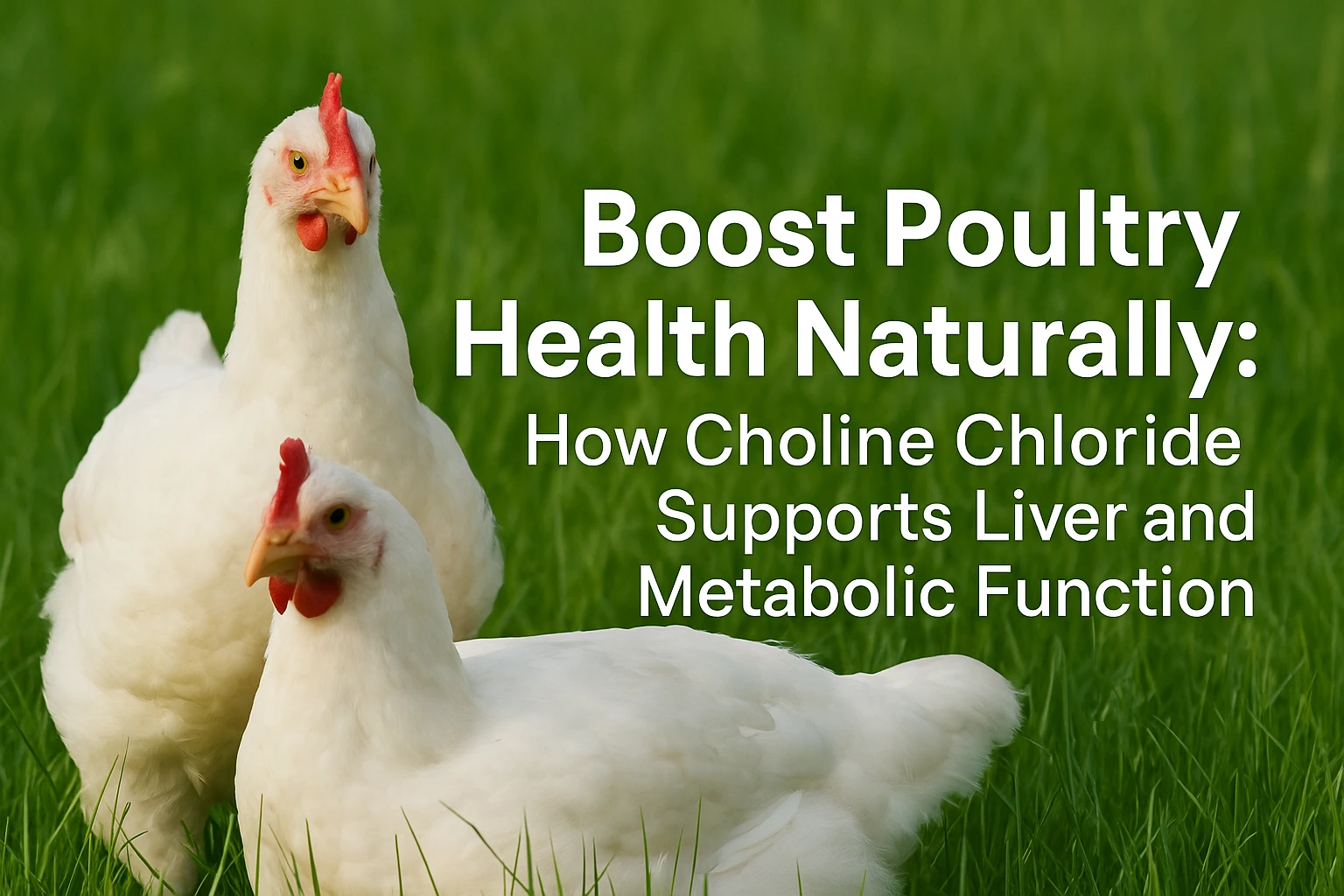1. Introduction: The Importance of Liver Health in Poultry
The liver is the metabolic powerhouse of poultry—it regulates nutrient assimilation, detoxification, and fat transportation. However, intensive farming and high-energy diets frequently lead to fatty liver hemorrhagic syndrome (FLHS) and reduced feed efficiency. This is where choline chloride, an essential nutrient, comes in. As highlighted by MU Yaqoob et al. (2024) on ScienceDirect, choline chloride supplementation can prevent the onset of FLHS by reducing hepatic fat deposition in layers and broilers. Its function in synthesizing phosphatidylcholine ensures optimal fat mobilization, which keeps the liver lean and enhances overall metabolic fitness.
2. Understanding Choline Chloride’s Role in Metabolism
Choline chloride plays three crucial biochemical roles: lipid transport, cell membrane maintenance, and fat metabolism. Acting as a precursor to acetylcholine, it supports nervous system health, while its role in VLDL (very low-density lipoprotein) formation prevents fat buildup in the liver. Studies from The Poultry Site and SciELO [Bernardes et al., 2025] confirm that supplementing 60% choline chloride improves the hepatoprotective capacity of poultry, enhancing nutrient utilization and energy balance. In broiler diets, choline chloride supplementation improves feed conversion ratios, protects liver tissue from oxidative stress, and stimulates growth efficiency, as documented by MT Royal (2025) and Lima (2012) in PMCstudies.
3. Benefits Across Broilers and Layers
For broilers, the metabolic benefit of choline chloride manifests as higher weight gain, improved carcass yield, and reduced fat deposition. De Lima et al. (2024) demonstrated that broilers receiving dietary choline supplementation grew faster due to enhanced nutrient metabolism and reduced metabolic stress. In layers, it supports yolk formation and eggshell integrity while maintaining consistent production. Supplementation levels of 1,000–1,300 mg/kg of feed, as recommended by the NRC (1994) and updated by Lima (2012), optimize performance without adverse effects. Moreover, choline chloride combined with herbal bio-enhancers like methionine and coated cysteamine further supports gut and liver health, offering producers a balanced route to sustainable productivity.
4. Natural Alternatives and Sustainability Trends
Growing demand for natural feed additives has led to the rise of bio-based or herbal choline sources such as Natu-B4™ and Biocholine. However, current meta-analyses by Taschetto et al. (2025) highlight that while herbal choline blends can complement feed, pure choline chloride still delivers superior consistency and metabolic control. Sustainable choline sourcing is advancing rapidly—major formulations are shifting to eco-efficient production using enzymatic hydrolysis of ethanolamines. These cleaner processes reduce environmental impacts while maintaining the critical biological efficacy that poultry producers rely on.
5. Conclusion: Building Poultry Health Through Smarter Nutrition
Choline chloride stands at the crossroads of high productivity and metabolic well-being. From liver lipid regulation to improved egg quality and energy synthesis, its function is indispensable in modern poultry nutrition. As global consumption of poultry climbs beyond 47% of total meat protein by 2031 (KDLFeed, 2025), efficient nutrient management becomes the foundation for profitability. Whether used alone or alongside natural complementing sources, choline chloride remains a cornerstone additive for healthier, more sustainable growth.

Leave a Comment